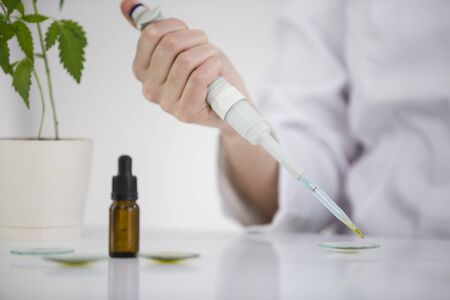1. Understanding Hyperpigmentation
Hyperpigmentation is a common skin condition that causes certain areas of the skin to become darker than the surrounding skin. This happens when the skin produces excess melanin, the pigment responsible for skin color. While hyperpigmentation is generally harmless, it can be a cosmetic concern for many people.
Common Causes of Hyperpigmentation
There are several reasons why hyperpigmentation occurs, ranging from sun exposure to hormonal changes. Below are some of the most common causes:
| Cause | Description |
|---|---|
| Sun Exposure | UV rays stimulate melanin production, leading to dark spots or sunspots over time. |
| Hormonal Changes | Pigmentation issues like melasma often occur due to pregnancy or birth control use. |
| Post-Inflammatory Hyperpigmentation (PIH) | Dark spots that appear after acne, cuts, or other skin injuries heal. |
| Aging | The natural aging process can lead to uneven skin tone and dark patches. |
| Certain Medications | Some drugs, including chemotherapy medications, can trigger pigmentation changes. |
How Hyperpigmentation Affects Different Skin Types
The way hyperpigmentation appears varies depending on your skin type. People with darker skin tones tend to be more prone to hyperpigmentation because they naturally have more melanin. On lighter skin tones, pigmentation issues may appear as freckles or age spots.
Darker Skin Tones
Darker-skinned individuals may experience hyperpigmentation that lasts longer and is more resistant to treatment. PIH is particularly common in these skin types, especially after acne breakouts or minor wounds.
Lighter Skin Tones
Lighter-skinned individuals are more likely to develop sun-induced pigmentation such as freckles and age spots. While they may not experience PIH as frequently, prolonged UV exposure can cause significant discoloration over time.
The Importance of Sun Protection
No matter your skin tone, protecting yourself from the sun is key to preventing hyperpigmentation from worsening. Wearing sunscreen with at least SPF 30 daily can help reduce the risk of dark spots forming.
2. Popular Natural Remedies for Hyperpigmentation
Many people turn to natural remedies to help lighten dark spots and even out their skin tone. Some of the most popular options include aloe vera, turmeric, lemon juice, and apple cider vinegar. But do these ingredients really work? Lets take a closer look at each one.
Aloe Vera
Aloe vera is well known for its soothing and healing properties. It contains aloin, a compound that may help lighten hyperpigmentation over time.
How to Use Aloe Vera
- Apply fresh aloe vera gel directly to dark spots before bed.
- Leave it on overnight and rinse off in the morning.
- Repeat daily for best results.
Turmeric
Turmeric contains curcumin, which has anti-inflammatory and skin-brightening properties. Many people use it to reduce the appearance of dark spots.
How to Use Turmeric
- Mix turmeric powder with honey or yogurt to create a paste.
- Apply to affected areas and leave on for 10-15 minutes.
- Rinse off with lukewarm water and moisturize.
- Use 2-3 times per week.
Lemon Juice
Lemon juice is a natural source of vitamin C and citric acid, which may help exfoliate and brighten the skin. However, it can be harsh and cause irritation if not used properly.
How to Use Lemon Juice Safely
- Dilute lemon juice with equal parts water before applying.
- Use a cotton pad to apply it to dark spots.
- Leave it on for 5-10 minutes, then rinse off thoroughly.
- Avoid sun exposure after using lemon juice as it can make your skin more sensitive to UV rays.
Apple Cider Vinegar
Apple cider vinegar contains acetic acid, which may help lighten pigmentation by gently exfoliating the skin.
How to Use Apple Cider Vinegar
- Dilute apple cider vinegar with water (1:1 ratio).
- Dab onto dark spots using a cotton ball.
- Leave on for a few minutes before rinsing off.
- If irritation occurs, reduce usage to every other day or less frequently.
Comparison of Natural Remedies
| Treatment | Main Benefit | Caution |
|---|---|---|
| Aloe Vera | Soothe and lighten dark spots gradually | Mild and safe for most skin types |
| Turmeric | Brightens skin and reduces inflammation | Might stain skin temporarily; patch test first |
| Lemon Juice | Naturally exfoliates and brightens skin | Makes skin sensitive to sunlight; always dilute |
| Apple Cider Vinegar | Mildly exfoliates and lightens pigmentation | Might cause irritation; dilute before use |
The effectiveness of these natural remedies varies from person to person. While some people see positive results, others may experience irritation or minimal improvements. Its always best to do a patch test before trying any new treatment and consult a dermatologist if you have concerns about hyperpigmentation.

3. The Science Behind Natural Treatments
Many people turn to natural remedies to treat hyperpigmentation, hoping for effective and gentle solutions. But do these treatments actually work? Let’s take a closer look at the scientific evidence behind some popular natural remedies.
Common Natural Ingredients and Their Effectiveness
Several natural ingredients are often promoted as effective treatments for hyperpigmentation. Here’s what science says about them:
| Natural Ingredient | Scientific Evidence | Effectiveness |
|---|---|---|
| Vitamin C (L-Ascorbic Acid) | A powerful antioxidant that helps inhibit melanin production. Some studies show it can lighten dark spots over time. | Moderately Effective |
| Aloe Vera | A compound in aloe vera called aloesin has been shown to reduce melanin production in lab studies. | Mildly Effective |
| Lemon Juice | Naturally contains citric acid, which may have exfoliating effects. However, it can also cause irritation and make skin more sensitive to sunlight. | Poorly Supported, May Cause Irritation |
| Tumeric (Curcumin) | A few studies suggest curcumin may help reduce pigmentation by inhibiting melanin production. | Mildly Effective |
| Kojic Acid (From Fermented Foods) | A well-researched ingredient that helps lighten skin by blocking tyrosinase, an enzyme needed for melanin production. | Efficacy Supported by Research |
The Importance of Consistency and Patience
If you’re using natural remedies, it’s important to set realistic expectations. Unlike clinical treatments such as laser therapy or prescription creams, natural ingredients usually take longer to show visible results. Most studies suggest that consistent use over several weeks or months is necessary before noticeable improvements occur.
The Role of Skin Type and Condition
The effectiveness of natural treatments also depends on your skin type and the severity of your hyperpigmentation. For mild cases, certain ingredients like vitamin C and kojic acid may help. However, for deeper pigmentation issues such as melasma or post-inflammatory hyperpigmentation (PIH), stronger medical treatments might be required.
The Bottom Line on Scientific Evidence
While some natural remedies have promising research backing their effectiveness, many lack large-scale clinical trials to confirm their results. If youre considering natural treatments for hyperpigmentation, look for ingredients with proven benefits and always use sunscreen daily to prevent further pigmentation.
4. Potential Risks and Side Effects
While natural remedies for hyperpigmentation may seem like a gentle alternative to chemical treatments, they are not without risks. Even though these ingredients are derived from nature, they can still cause irritation, allergic reactions, or even worsen pigmentation if not used correctly. Here’s what you need to know about the potential side effects.
Skin Reactions and Irritation
Many natural ingredients contain active compounds that can be harsh on sensitive skin. For example:
- Lemon juice: Its high acidity can cause redness, stinging, and increased sensitivity to sunlight.
- Apple cider vinegar: While commonly used for skin brightening, it may lead to burns or irritation if applied undiluted.
- Aloe vera: Although soothing for many, some people may experience allergic reactions or rashes.
Risk of Increased Sensitivity
Certain natural remedies can make your skin more vulnerable to sun damage. Ingredients like citrus extracts and turmeric can increase photosensitivity, leading to further dark spots instead of reducing them. Always apply sunscreen when using these remedies to avoid worsening pigmentation.
Long-Term Effects of Natural Treatments
Using natural remedies over time can have mixed results. Some ingredients may gradually lighten dark spots, while others could disrupt the skin barrier or cause uneven pigmentation. Below is a breakdown of common natural treatments and their potential long-term effects:
| Natural Ingredient | Potential Long-Term Effect |
|---|---|
| Lemon Juice | Increased dryness, sensitivity, and risk of hyperpigmentation from sun exposure |
| Tumeric | Persistent yellow staining on skin; mild irritation in some individuals |
| Baking Soda | Poor pH balance, leading to dryness and irritation over time |
| Aloe Vera | Mainly safe but may cause allergies in rare cases |
| Apple Cider Vinegar | Potential for burns or disrupted skin barrier with prolonged use |
Patching Before Applying
If you’re considering using a new natural remedy, always do a patch test first. Apply a small amount on your inner arm and wait 24 hours to check for any redness, itching, or irritation before applying it to your face.
5. When to See a Dermatologist
Natural remedies can be a great starting point for treating hyperpigmentation, but they don’t always provide the desired results. Knowing when to switch from home treatments to professional care is essential for achieving clearer, healthier skin.
Signs That Natural Remedies Aren’t Working
If youve been using natural remedies consistently but aren’t seeing improvements, it might be time to consult a dermatologist. Here are some signs that indicate you need professional help:
| Sign | What It Means |
|---|---|
| No noticeable improvement after several weeks | Your skin may require stronger treatments that natural remedies cant provide. |
| Pigmentation is getting darker or spreading | The condition might be worsening and needs medical intervention. |
| Irritation or allergic reactions | Certain natural ingredients may not suit your skin type. |
| Pigmentation is linked to an underlying condition | A dermatologist can identify if theres a medical cause behind the issue. |
Treatment Options a Dermatologist May Recommend
If home remedies aren’t working, dermatologists offer various treatments tailored to your skin type and pigmentation concerns. Some common options include:
- Chemical Peels: Help remove layers of pigmented skin for a more even tone.
- Laser Therapy: Targets dark spots with precision to break up excess pigment.
- Prescription Topicals: Stronger creams containing hydroquinone, retinoids, or other medical-grade ingredients.
- Microdermabrasion: Exfoliates the outer layer of skin to promote new cell growth.
The Importance of Professional Diagnosis
A dermatologist can determine whether your hyperpigmentation is caused by sun damage, hormonal changes, post-inflammatory responses, or an underlying health condition. This ensures you get the right treatment for your specific case rather than wasting time on ineffective remedies.
Final Thoughts on Seeking Professional Help
If your hyperpigmentation isn’t improving or is becoming worse despite using natural treatments, don’t hesitate to reach out to a dermatologist. Professional guidance can help you find the most effective solution and prevent further skin damage.

